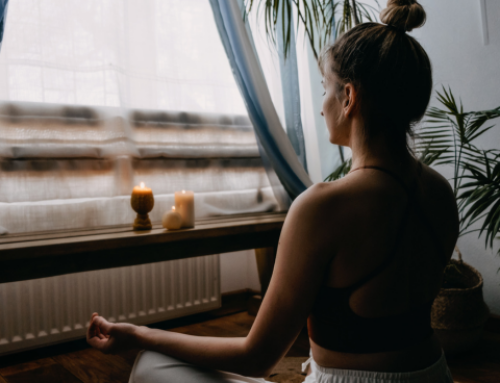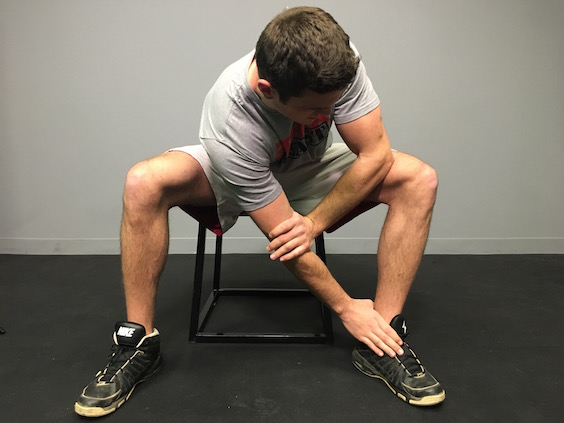Do You Really Lose Most of Your Body’s Heat Through Your Head?
Winter is coming. For some of us, it has already arrived for those athletes playing sports or exercising outdoors the risks of exposure, frostbite, and hypothermia increase in colder and wetter conditions. Wearing suitable clothing, including headgear, is important because the consequences of inadequate protection in adverse weather can be fatal.
Exercise increases your core body temperature and stimulates the cooling system through respiration and sweating, giving athletes the impression that they don’t need to cover up. The adage, ‘Dress for the second mile’ is good advice in normal conditions. Your body will warm up during the first mile of your run, and you don’t want to be wearing too many clothes that you regret for the rest of your run.

Outdoor Athletes
Team sport athletes can take off or put layers on the sidelines before the match starts or during intervals; they can adjust as necessary. But the runners, cyclists, hikers, and skiers have to be prepared for the duration of their training session or competition.
A common misconception is that most of the body’s heat is lost through the head. This is incorrect: heat is lost everywhere. The body loses heat by circulating blood to the skin and by sweating. Convection is the process of heat loss where hot air rises from the skin’s surface and is replaced by cooler air that sinks. The evaporation of moisture from the skin also cools the blood that then circulates back through the body. If an athlete exercises naked, heat will be lost equally across their whole body, with hairy parts that add natural insulation. The head accounts for about 10% of the surface area of humans and about 10% of the total heat loss.
The misconception about heat loss from the head came from one study on US Military aircrew in the 1950s. The researchers studied Arctic survival strategies and put the aircrew through tests without headgear. Unsurprisingly, the poor subjects lost most of their heat through their exposed heads. Everything else was wrapped up. A better-designed study (for the researchers at least) would have compared heat loss without trousers or jackets or boots or gloves to that when hatless. We can only surmise that this wasn’t done due to the reasonable objections of the otherwise obedient aircrew: they knew the risks.
The Two Main Risks In Winter
There are two main risks when exercising outdoors in winter (apart from slips, trips, and falls):
- Frostbite: an injury to the skin caused by freezing. It occurs in exposed areas. The risk of frostbite is only 5% when the temperature is above 5F (-15C). But at 0F (-18C), frostbite can occur within 30 minutes.
- Hypothermia: a drop in the body’s core temperature that results in peripheral systems shutting down to protect the core organs. Fatigue, shivering, slurring of speech, and lack of coordination are symptoms.
Both occur when the temperature drops and either the wind picks up, or it rains. Thermoregulation is affected by the weather. The cold air that touches the skin can both damage it and increase the rate of heat loss. So while 0F is a very low temperature, a cold wind creates a wind chill that makes an average cold day dangerous.
Wet weather that soaks the athlete cools them from the outside faster than they can warm up from the inside. This also occurs when wearing too many layers that trap moisture that cool and chills the body. This is a dangerous tipping point. The athlete can work harder to warm up, but this wastes energy, and the body starts to shut down.
Layer Up
The best way to reduce risk is to wear suitable clothing and check the weather forecast. Wearing thin layers that can easily be removed when you warm-up is essential. To prevent frostbite areas such as the nose, ears and fingers should be covered on cold days. You can wear thin, insulating gloves and a thicker pair of mittens on top that can be removed when you get warm to protect your hands.
- The layer closest to the skin should be porous, allowing moisture to be drawn away. Cotton layers are unsuitable because they trap moisture.
- The second layer should be a thin fleece or wool insulating material.
- The top layer should be a waterproof, breathable material protecting from wind and rain.
If the weather looks severe, find an alternative way of exercising that day: it is better to be safe and come back tomorrow.
RECOMMENDED FOR YOU
MOST POPULAR
Do You Really Lose Most of Your Body’s Heat Through Your Head?
Winter is coming. For some of us, it has already arrived for those athletes playing sports or exercising outdoors the risks of exposure, frostbite, and hypothermia increase in colder and wetter conditions. Wearing suitable clothing, including headgear, is important because the consequences of inadequate protection in adverse weather can be fatal.
Exercise increases your core body temperature and stimulates the cooling system through respiration and sweating, giving athletes the impression that they don’t need to cover up. The adage, ‘Dress for the second mile’ is good advice in normal conditions. Your body will warm up during the first mile of your run, and you don’t want to be wearing too many clothes that you regret for the rest of your run.

Outdoor Athletes
Team sport athletes can take off or put layers on the sidelines before the match starts or during intervals; they can adjust as necessary. But the runners, cyclists, hikers, and skiers have to be prepared for the duration of their training session or competition.
A common misconception is that most of the body’s heat is lost through the head. This is incorrect: heat is lost everywhere. The body loses heat by circulating blood to the skin and by sweating. Convection is the process of heat loss where hot air rises from the skin’s surface and is replaced by cooler air that sinks. The evaporation of moisture from the skin also cools the blood that then circulates back through the body. If an athlete exercises naked, heat will be lost equally across their whole body, with hairy parts that add natural insulation. The head accounts for about 10% of the surface area of humans and about 10% of the total heat loss.
The misconception about heat loss from the head came from one study on US Military aircrew in the 1950s. The researchers studied Arctic survival strategies and put the aircrew through tests without headgear. Unsurprisingly, the poor subjects lost most of their heat through their exposed heads. Everything else was wrapped up. A better-designed study (for the researchers at least) would have compared heat loss without trousers or jackets or boots or gloves to that when hatless. We can only surmise that this wasn’t done due to the reasonable objections of the otherwise obedient aircrew: they knew the risks.
The Two Main Risks In Winter
There are two main risks when exercising outdoors in winter (apart from slips, trips, and falls):
- Frostbite: an injury to the skin caused by freezing. It occurs in exposed areas. The risk of frostbite is only 5% when the temperature is above 5F (-15C). But at 0F (-18C), frostbite can occur within 30 minutes.
- Hypothermia: a drop in the body’s core temperature that results in peripheral systems shutting down to protect the core organs. Fatigue, shivering, slurring of speech, and lack of coordination are symptoms.
Both occur when the temperature drops and either the wind picks up, or it rains. Thermoregulation is affected by the weather. The cold air that touches the skin can both damage it and increase the rate of heat loss. So while 0F is a very low temperature, a cold wind creates a wind chill that makes an average cold day dangerous.
Wet weather that soaks the athlete cools them from the outside faster than they can warm up from the inside. This also occurs when wearing too many layers that trap moisture that cool and chills the body. This is a dangerous tipping point. The athlete can work harder to warm up, but this wastes energy, and the body starts to shut down.
Layer Up
The best way to reduce risk is to wear suitable clothing and check the weather forecast. Wearing thin layers that can easily be removed when you warm-up is essential. To prevent frostbite areas such as the nose, ears and fingers should be covered on cold days. You can wear thin, insulating gloves and a thicker pair of mittens on top that can be removed when you get warm to protect your hands.
- The layer closest to the skin should be porous, allowing moisture to be drawn away. Cotton layers are unsuitable because they trap moisture.
- The second layer should be a thin fleece or wool insulating material.
- The top layer should be a waterproof, breathable material protecting from wind and rain.
If the weather looks severe, find an alternative way of exercising that day: it is better to be safe and come back tomorrow.











